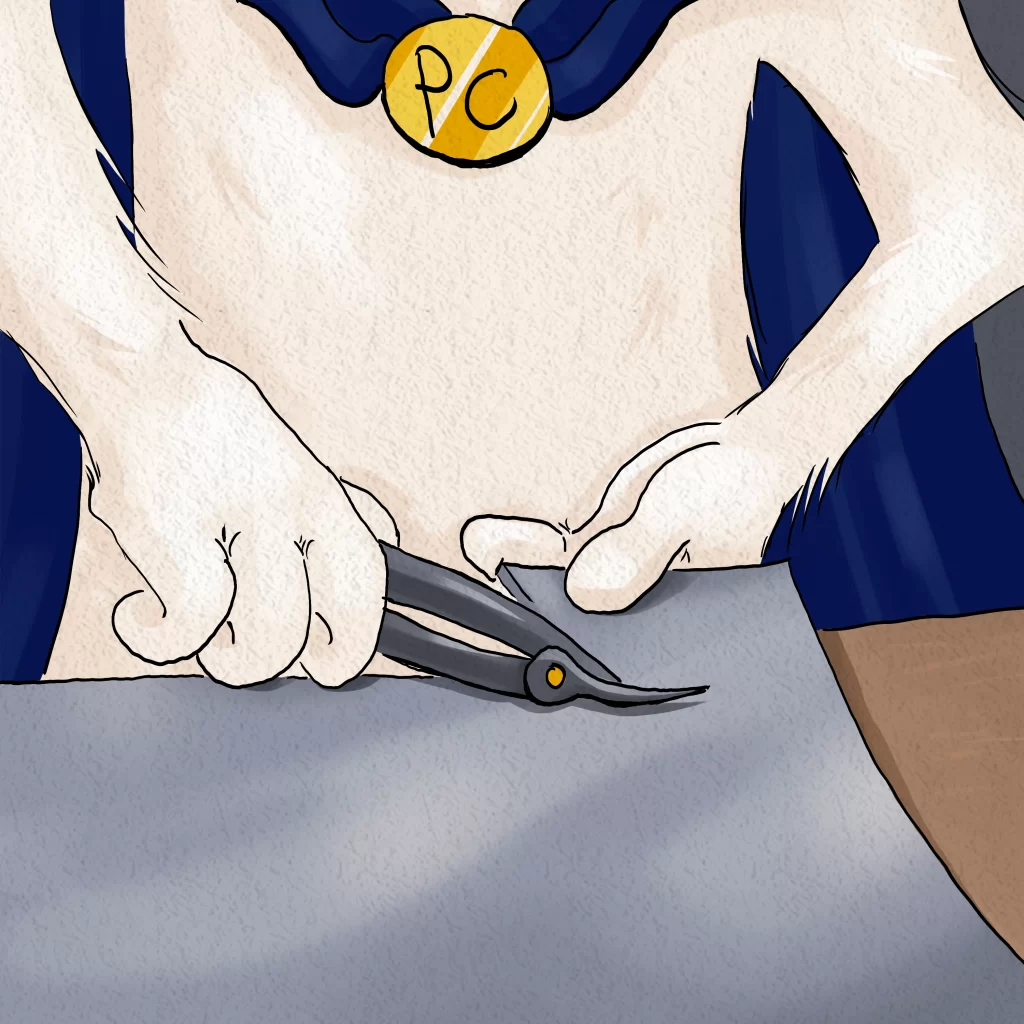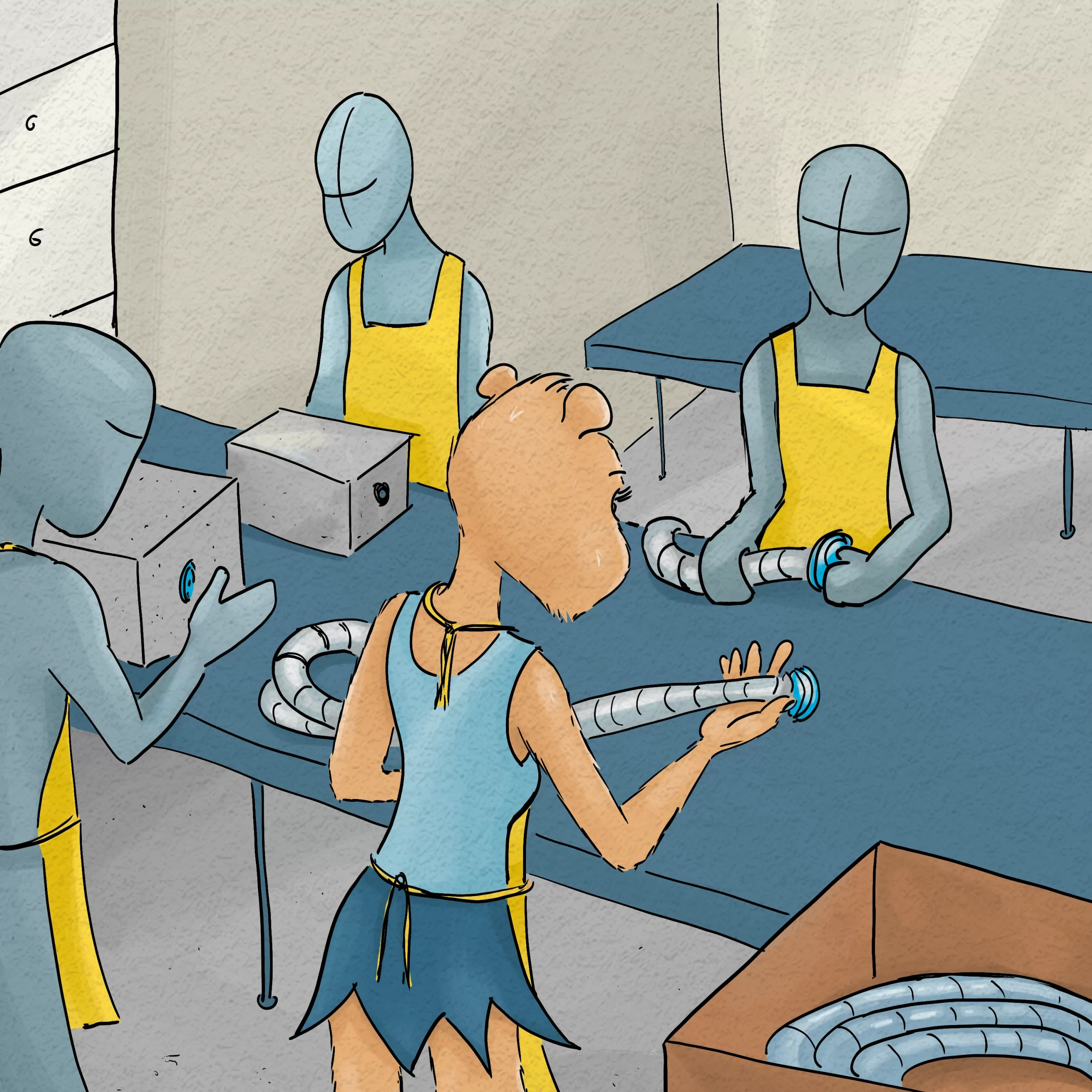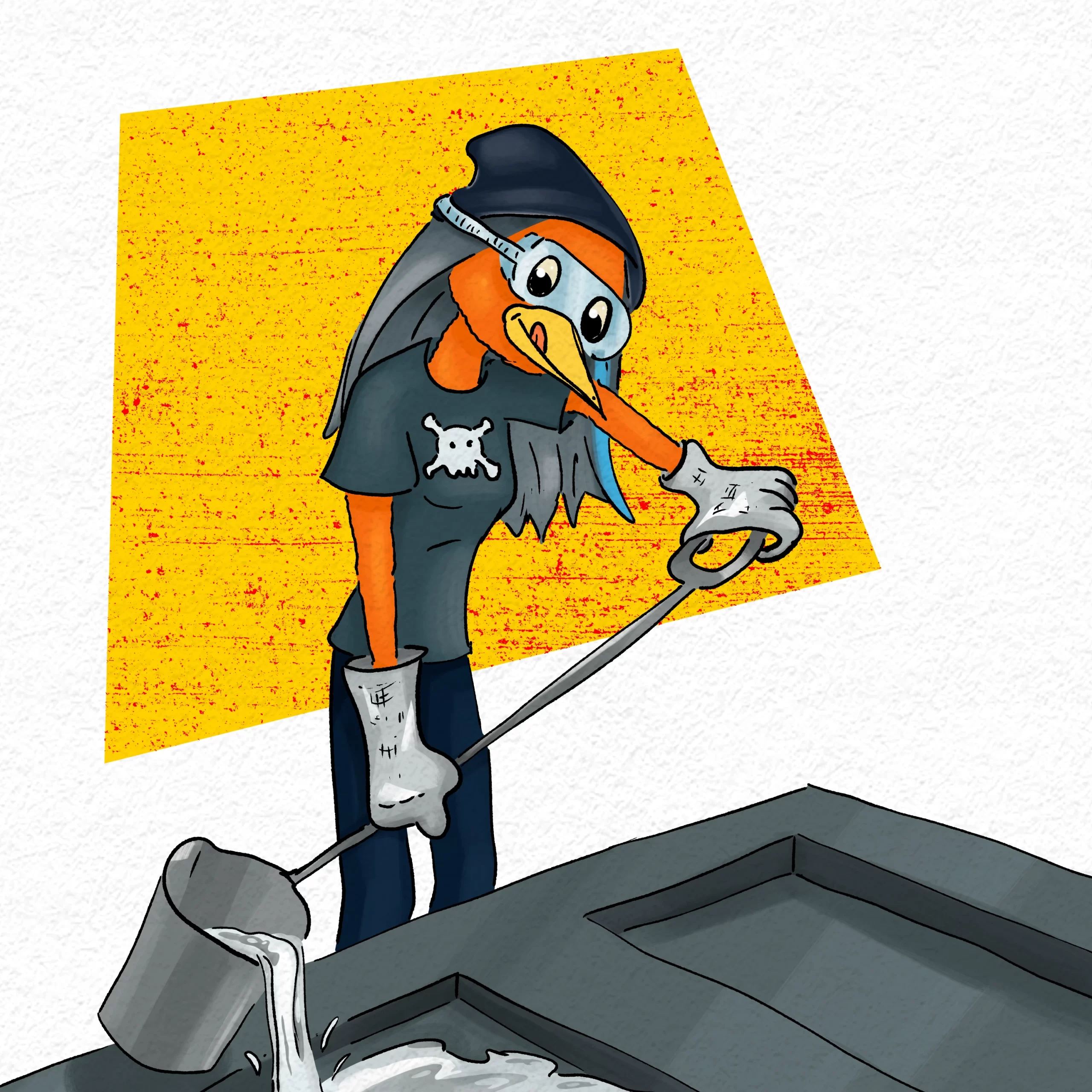
You’re on board* with learning about the most common manufacturing technologies. Because you’re a small business owner (or a maker or manufacturer or craftsperson or whatever you call yourself!) And although you may already have processes for making your products, you know that there is value in learning what other technologies are out there. Specifically, knowing about other common manufacturing technologies can be useful when you’re ready to scale up production of an existing product or start manufacturing something you just designed… and sometimes, knowing what technologies are available can even spur your creativity and give you ideas for new products!
The Zattatat gang was on board with this idea too…
If you’re a regular here, you know that the Zattatat gang consists of Rhonda, a retired nurse who now makes and sells wooden coasters and beer mugs; Gary, an accountant who has a side business as a baker; and Princess Capybara, a young serial entrepreneur whose recent endeavors have included biotech, concrete molding, and skin serums.
They often ask for advice from their friend Process Cat, a manufacturing superhero who’s always happy to help.
And of course, you also know that recently the gang asked Process Cat to give them a master class, on the general topic of manufacturing technologies, so they would know what options were out there the next time they wanted to make something new.
This week, everyone was excited to learn about…
Sheet Metal Forming!
This technology is more or less what it sounds like: taking a sheet of metal and forming (bending) it to make a piece of the desired shape. A good way to intuitively understand sheet metal forming is to take a piece of aluminum foil from your kitchen drawer, then cut it and bend it to make a cool shape. That’s sheet metal forming!
But sheet metal forming is a very versatile technology done at all different scales. Some common applications include autobody, train, airplane and bridge parts at the large scale; metal beverage cans and small appliances like toasters (the external body) on the smaller scale.
Sheet metal forming is in some ways analogous to the process of thermoforming (also called vacuum forming) which we learned about in (link: this article (Link to https://zattatat.com/manufacturing-technologies-01/)
The difference comes in because metal, once it’s at higher thicknesses/stiffnesses than aluminum foil, is much harder to cut, bend and form than a thin sheet of plastic. Whereas I (MG) have a benchtop machine for vacuum forming in the Zattatorium (yeah that’s what I call my workshop!) which doesn’t even require special safety equipment other than gloves for the heat, sheet metal forming is more commonly done in larger and/or higher-throughput industrial settings.
Ok, So What’s Involved in Sheet Metal Forming?
Glad you asked 😉
The first step is usually cutting a large sheet of metal into pieces of the desired size.

At larger scales this is done with lasers, with water and abrasive, or with presses that basically “snap” a piece of metal into pieces of the desired size. (To picture this, think of a piece of metal as thick as a metal sheet pan or thicker, and imagine using blocks of a harder metal or other material to break it into smaller pieces with a straight edge.)
Sheet metal cutting is obviously a huge topic on its own, but really that’s the gist of it: take a big sheet of metal and make it into smaller sheets of metal.
And what comes after that is…
Bending
Yes, you probably guessed it: the next step is bending (/forming/molding) your sheet of metal into the shape that you want.

As with the rest of sheet metal forming, you probably have some intuitive sense of what it is to bend a sheet of metal, based on your own real-life experiences. So looking at the above picture of Princess Capybara, you probably have some sense that if she were to let that piece of metal go, it would just snap back into its original shape. And you’d be right! Because the sheet of metal in that picture hasn’t been bent past its…
Plastic Deformation Point
Note that the word “plastic” in “plastic deformation” doesn’t mean plastic in the sense of a polymeric material, like the material used to make toy building blocks or plastic cups or kitchen trash cans or the casing for your ballpoint pen.
Plastic deformation is used in contrast to elastic deformation, and it means a permanent change in the shape of a piece of material. Elastic deformation is what Princess Capybara is showing in the picture above, the bending of a material that is temporary. The material will revert to its original shape once she lets go of the ends.
And for sheet metal forming, we need plastic deformation without bending the material so far that it breaks (which, remember, is one of the ways we can accomplish sheet metal cutting.)
So those are the basics of sheet metal forming!
Cut your sheet of metal, and bend your sheet of metal. Again, of course, there are a lot more details you can get into with sheet metal forming, but now you’re aware of the basic concept so you’ll have it in mind next time you’re figuring out the best way to make something.
Process Cat and Princess Capybara felt satisfied with their progress for the day and decided it was time to unwind with a beverage. Unfortunately, neither wine nor coffee are usually served in packaging made by sheet metal forming….

Weekly Challenge:
Look around at things you use in your own business or even in your personal life. Can you identify some things that were probably made by sheet metal forming? (I bet you can!) And come back next time for the final installment of our “Ways to make things” series.
*By “on board with learning about,” I of course mean, “willing to read an article about as long as it’s short and there are cartoon characters.”
Ready to learn more? Read the next article in the series!



